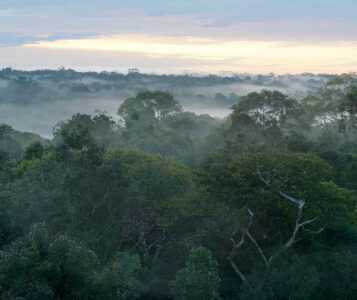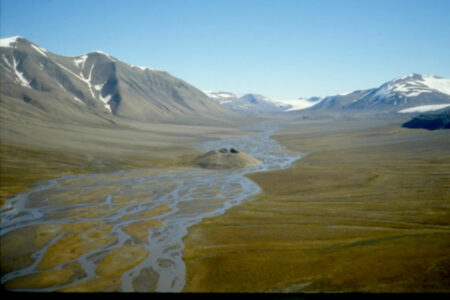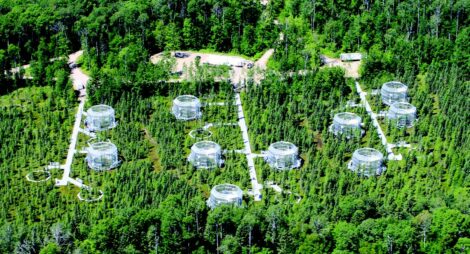Terrestrial Ecology

NGEE–Tropics. Tropical forests such as the Amazon (pictured) cycle more carbon and water than any other ecosystem and are estimated to be Earth’s largest carbon sink. A critical question is whether these forests will continue to offset a large fraction of anthropogenic carbon emissions or become carbon sources. [Lawrence Berkeley National Laboratory]
Priority Research Objectives
Through hypothesis-driven observations, experimental manipulations, and large-scale, long-term field studies, ESS supports foundational terrestrial ecology research, including studies in critical and potentially sensitive ecosystems. The program’s goals are to understand and explain mechanisms and processes controlling primary production and carbon cycling, biogeochemistry, and the impacts of disturbance on terrestrial ecosystems.

Permafrost Landscapes. Degradation of ice-rich permafrost causes subsidence and increased variability in topography across the Arctic landscape. Associated changes in hydrology, vegetation, and biogeochemistry create “hot spots” (i.e., locations within an ecosystem that exert a disproportionately large influence on the flow and processing of nutrients) for CO2 and CH4 fluxes.
Terrestrial ecology research focuses on ecosystems and ecological processes that are globally or regionally significant, expected to be sensitive to climate change, and are insufficiently understood or inadequately represented in models. As part of the Biological and Environmental Research (BER) Program, ESS coordinates with BER’s Earth and Environmental Systems Modeling program (and research from other federal agencies), ensuring that experimental and observational results are incorporated into Earth system models to enhance climate projections and inform DOE’s energy decisions. ESS is a leader among U.S. and international agencies in the design, construction, and operation of pioneering, long-term, large-scale field experiments that are critical to understanding ecosystem responses to a changing climate.
Current and future ESS investments in terrestrial ecology research include BER’s innovative concept for coupling models with experimental and observational campaigns such as the Next-Generation Ecosystem Experiments (NGEE) projects in the Arctic and tropics. ESS supports additional investments in large-scale ecosystem manipulations in the Spruce and Peatland Responses Under Changing Environments (SPRUCE) project being conducted in northern Minnesota.

Aerial View of SPRUCE Project Site. SPRUCE research is being conducted on an 8.1 hectare peatland of the Marcell Experimental Forest in northern Minnesota. Ten open-topped aboveground enclosures are being used to simulate various levels of warming and CO2 exposure. The remote landscape includes a mix of uplands, bogs, fens, lakes, and streams. [Courtesy Oak Ridge National Laboratory] ESS investments also provide management and support infrastructure for the AmeriFlux Network, an interagency activity coordinating long-term CO2 (and energy) flux measurements at field sites across North America. These continuous measurements of ecosystem carbon flux provide important insights into these processes as well as the long-term records needed to validate model projections.
Why Terrestrial Ecology Research Is Important
A significant fraction of the CO2 released to the atmosphere during energy production is taken up by terrestrial ecosystems. This “sink” for anthropogenic carbon represents an important buffer for offsetting the greenhouse gas effects of CO2 emissions. However, greater insight is needed into the details of these processes, the role of climate variability and change on that uptake, and effects of related processes such as nutrient, water, and energy cycling. Uncertainties about how terrestrial ecosystems will function in a changing climate hamper efforts to quantify and project long-term impacts and stability of carbon in the biosphere. Understanding ecosystem functions is essential for improving the ability to predictively model terrestrial ecosystems and their feedbacks to the Earth system. Terrestrial ecology research supported by ESS navigates the forefront of interactions between terrestrial ecosystems and a changing climate, with the ultimate goal of capturing the state of the science in coupled Earth system models.
